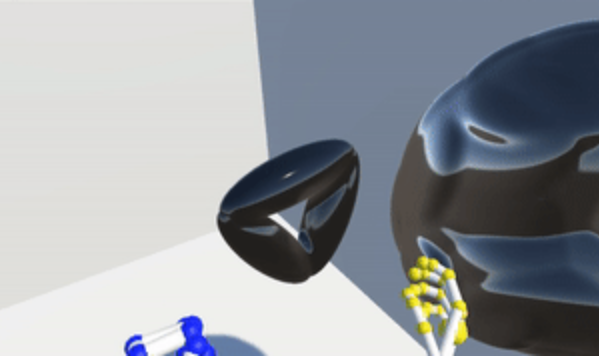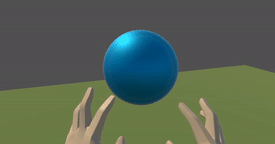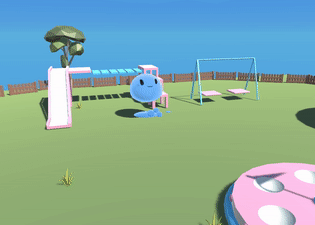We spent much of our time this week trying to resolve core issues with our prototype prior to halves. We were able to get Flex working more smoothly after we switched to a computer with better GPU. We saw significantly improved FPS. We were also able to increase the particle counts within one flex object. Our first prototype started with under 100 particle and we increased to around 900 hundred. This meant the object felt more moldable and reactive. We also didn’t see our slime objects doing as much odd, chunky behavior.


However, there were still some technical issues with the slime. Bringing a slime blob close to your head & the camera makes the frame rate drop very quickly. We are still considering how we want to prevent this from happening, but we may take the slime out of molding phase if it is too close. We also determined that we can only have a certain number of flex objects in the scene- otherwise, once again, low frame rate. It is possible that we can limit the number by only letting guests interact with one or two slime objects at a time and transforming an object they are not interacting with back into a slime creatures.
Another significant challenge we faced was integrating the AI, the characters and the playground props. These items didn’t always interact the way we planned initially and this took a lot of adjustment. The AI’s on the other hand had begun to gather new traits. We discovered the need for queueing behaviors as slime characters clamored to hop on to rides. We realized we wanted to be able to drop a character next to one of the playground objects and have them choose it as their current destination rather than about face and head back to where they were snatched from.
We were also still struggling to make our creatures work with all of the various pieces of technology. The shader was looking great but didn’t work as expected with our plan for soft-body physics. Further the mesh deformation for the creatures didn’t mix well with the gestures we had selected as triggers for Leap Motion. We struggled with these problems but for the most part had to leave them by the wayside as we prepared for playtesting and halves.

At the end of the week we took time to do a playtest with a group from outside of the ETC. We had some EA employees come in and play our demos. What we saw was that the slime molding was very enjoyable, people were excited about that piece of our demo. They enjoyed interacting with slime creatures as well, but it got old fast. There was no direction and no goal. Many of our interactions were not working as expected and so the world felt a bit bland. This set the bar high for our next playtests: we should have plenty of goals available to our player.